Beijing (FN), Jun. 25 – China has always upheld the spirit of internationalism and humanitarianism as a developing country. Under the framework of South-South cooperation, China has done what it can to provide assistance to over 160 countries and international organizations without any political conditions, contributing to international development cooperation, which has won extensive acclaim from the international community, especially from other developing countries.
Since the Eighteenth National Congress of the Communist Party of China (CPC), China has entered a new stage so far as its foreign assistance is concerned. Chinese President Xi Jinping put forward building a community with a shared future for humankind with the Belt and Road Initiative, advocating the principle of upholding justice while pursuing shared interests, the principle of sincerity, real results, affinity and good faith, and the principle of amity, sincerity, mutual benefit and inclusiveness. China announced a series of foreign assistance measures at international occasions such as the Belt and Road Forum for International Cooperation and the Beijing Summit of the Forum on China-Africa Cooperation, sharing Chinese wisdom and solutions for global development problems and promoting the implementation of the United Nations 2030 Agenda for Sustainable Development. Such initiatives are a direct representation of China's sense of responsibility as a major power.
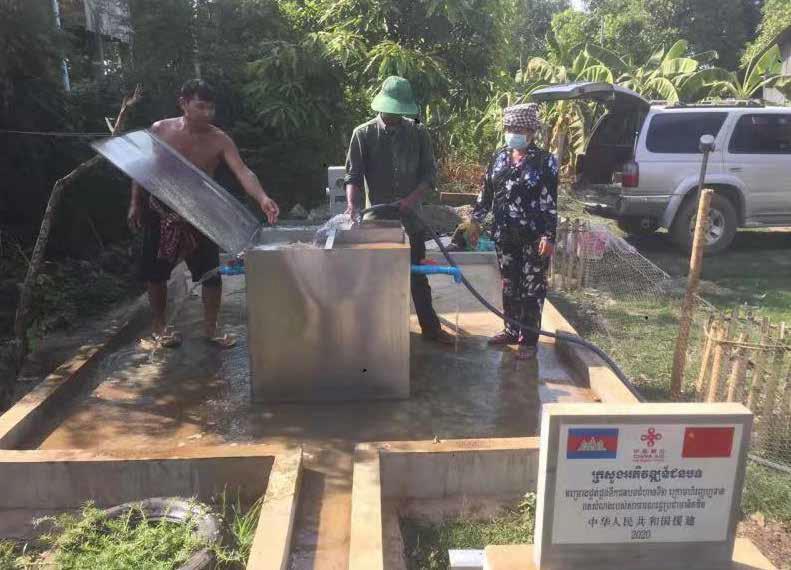
Since 2017, China has sunk about 1,800 deep water wells and built about 80 ponds in 16 provinces in Cambodia, including Kampong Chhnang, Prey Veng, Kampong Speu, and Svay Rieng. These initiatives have greatly improved the water supply in rural areas in Cambodia.

In 2018, China provided Cambodia with 40 mobile clinic vehicles equipped with medical devices to meet the needs of general examination and treatment, covering pediatrics, general surgery, obstetrics and gynecology, dentistry, ENT, X-ray, and ultrasound.
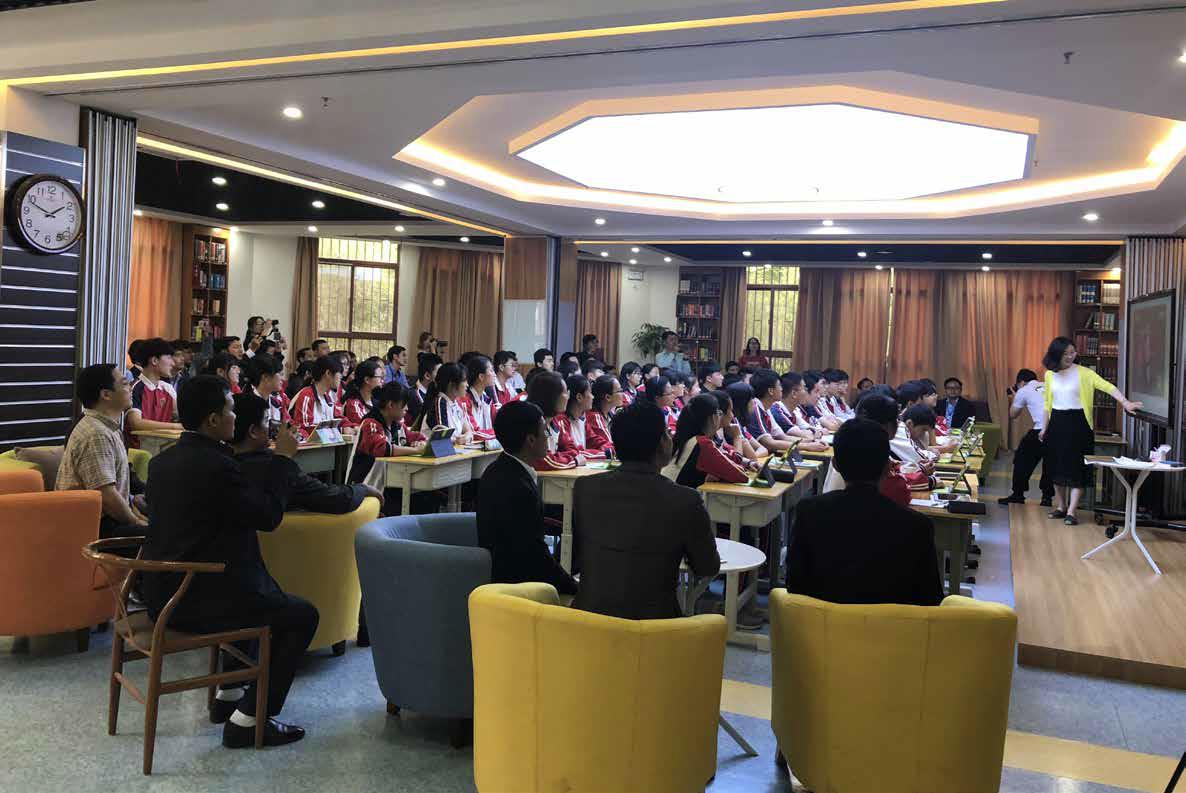
In May 2018, China held the Cambodian Education Digitalization Training Program in Changsha, Hunan, in which a total of 38 officials participated. The picture shows trainees paying a visit to the IT-based education classroom at Zhengzhou No. 7 Middle School.
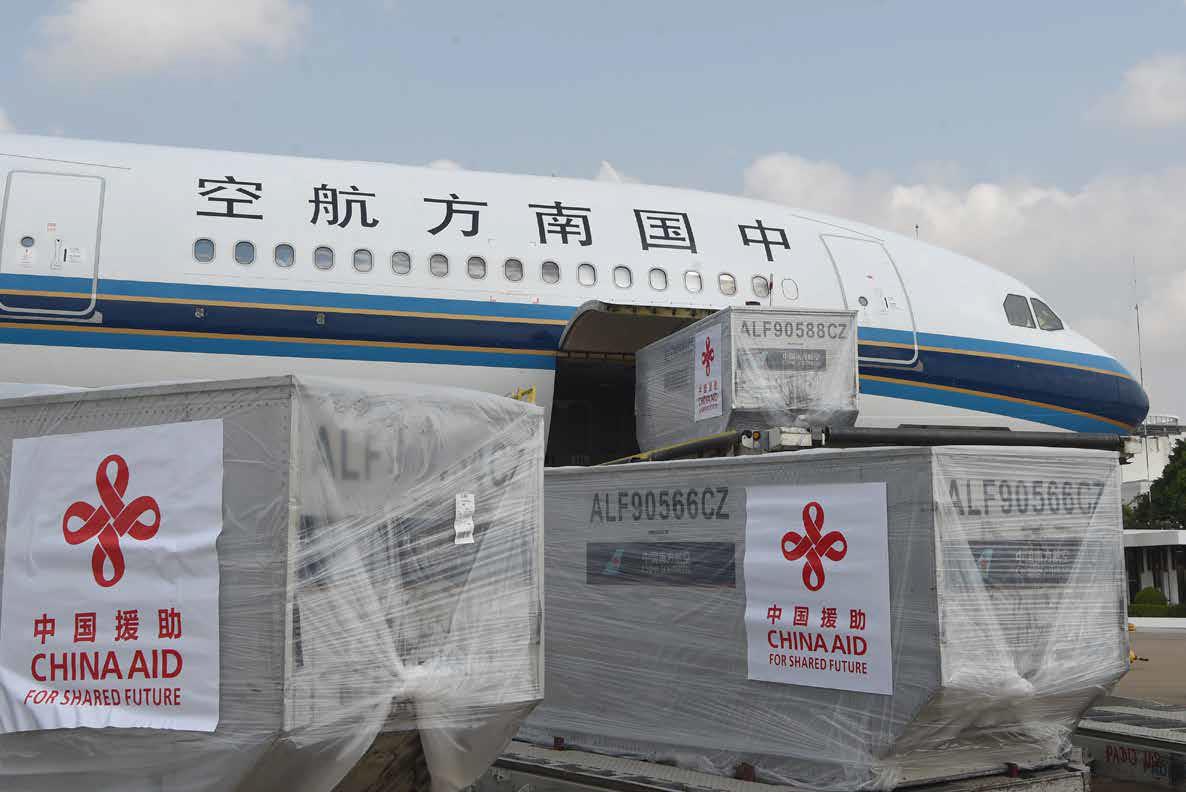
In March 2020, seven Chinese medical experts and antiepidemic medical supplies arrived at the Phnom Penh International Airport by chartered flight. The picture shows medical supplies provided by China.
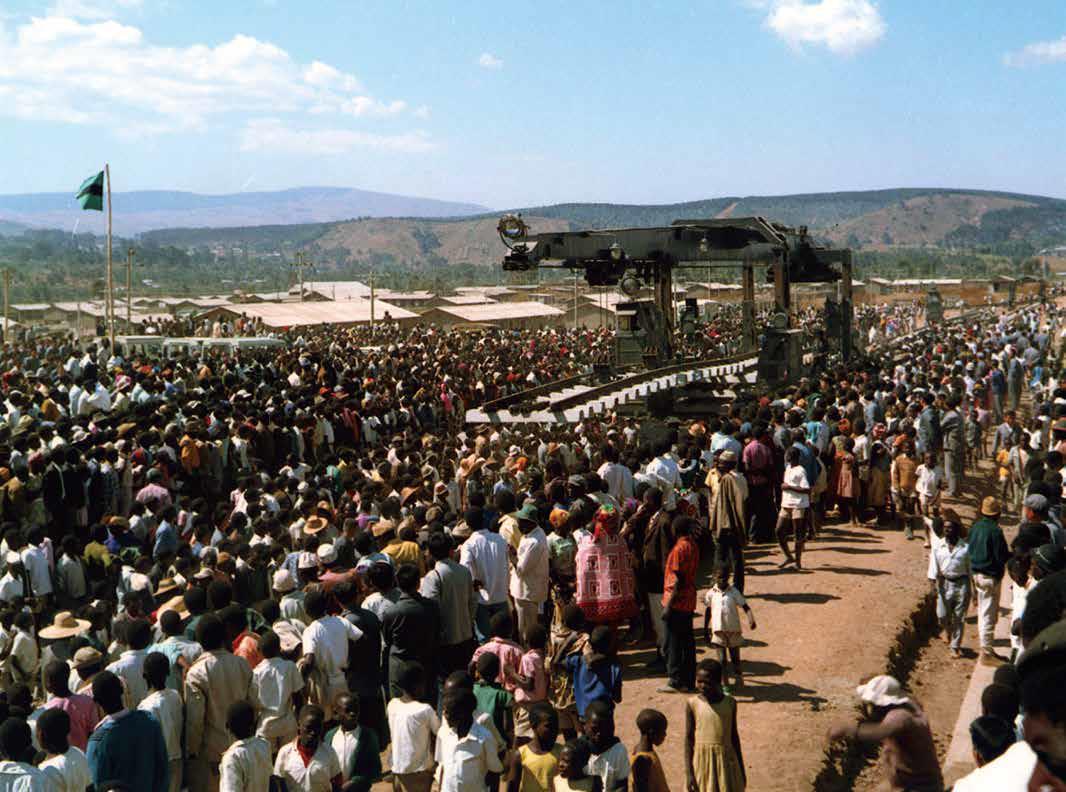
The construction of the Tanzania-Zambia Railway officially started on October 26, 1970. As one of China’s largest complete foreign aid projects to date, it serves as a major artery of traffic in East Africa. The picture shows a meeting being held in the city of Mbeya, Tanzania, to celebrate the construction of the Tanzania-Zambia Railway in the local areas.
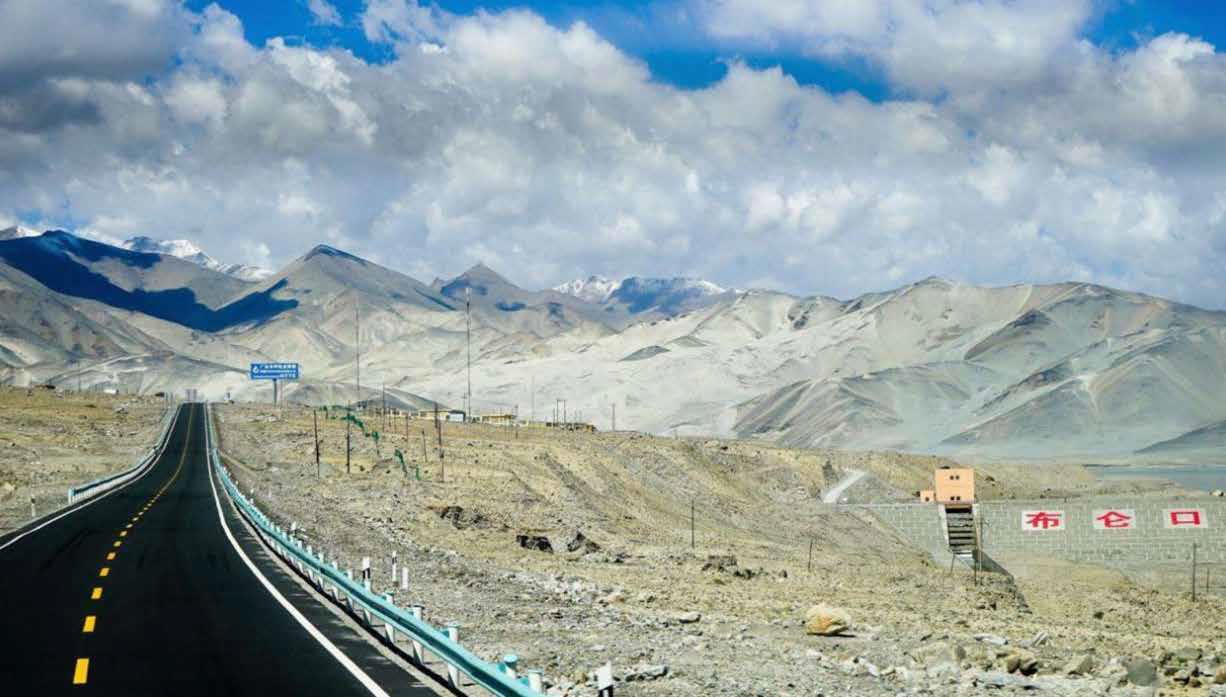
Built with the aid of the Chinese government, Karakoram Highway in Pakistan was completed in 1979 and open to traffic in 1986. The highway is recognized as one of the highest paved and most beautiful highways in the world and is often referred to as the Eighth Wonder of the World.
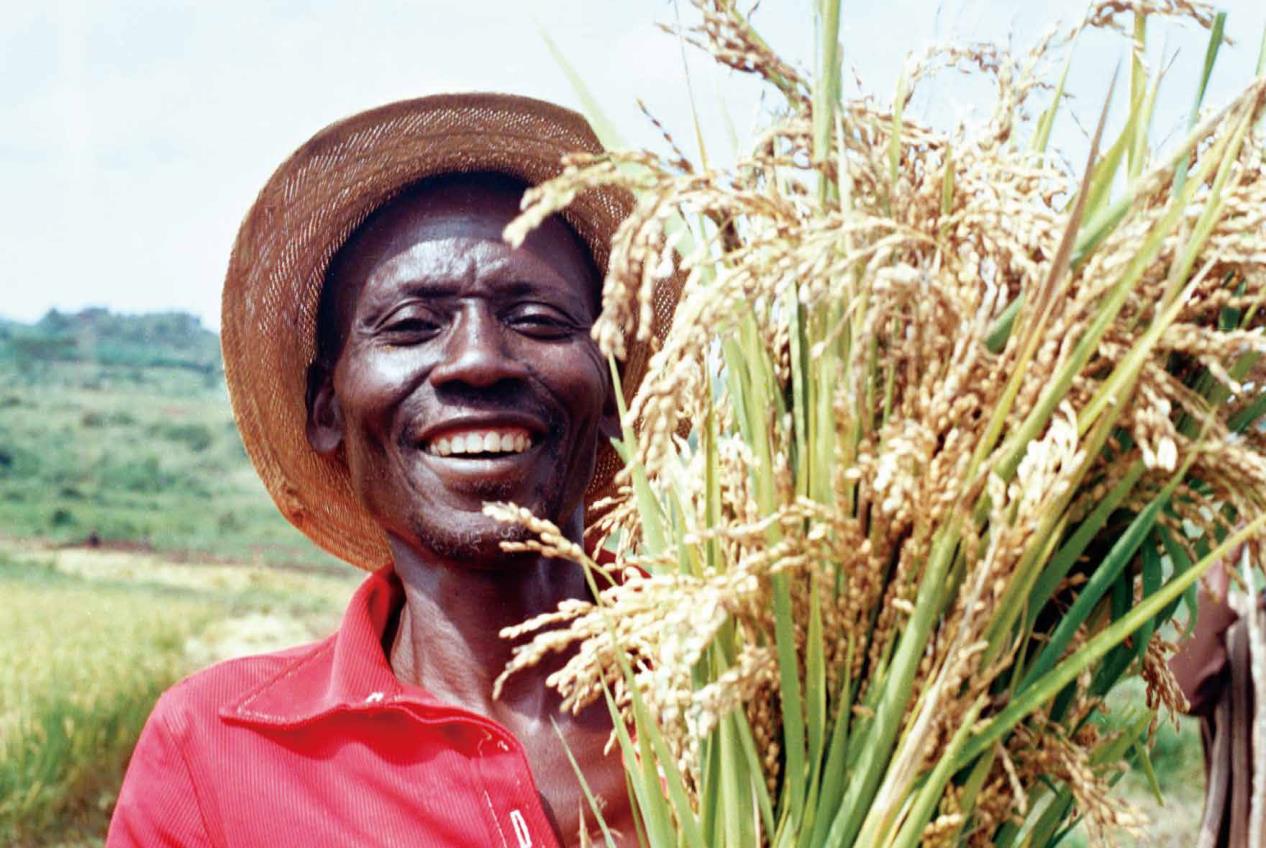
The rice project in Rwanda was built with Chinese aid and completed in July 1982. In the area where the project was carried out, the cultivated land amounts to 300 hectares.
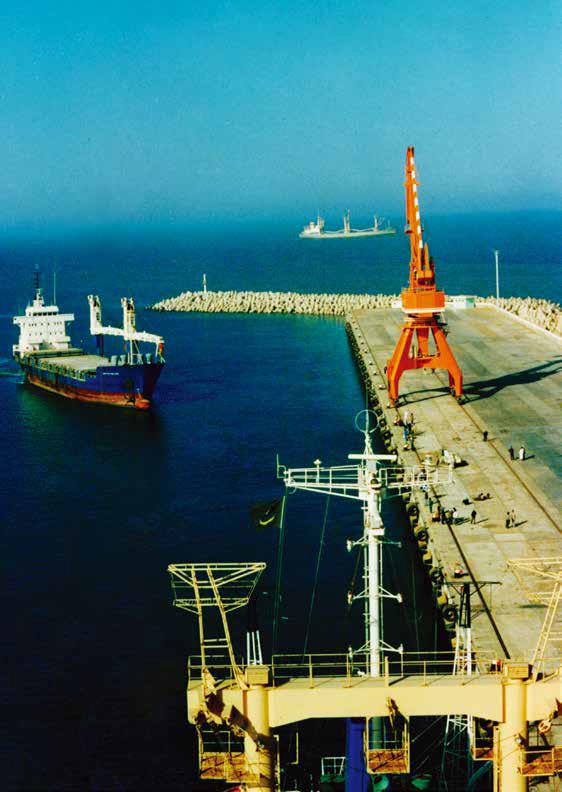
Friendship Port is an important infrastructure facility in Mauritania that was built with Chinese aid in the 1970s. Completed and put into use in 1986, it was the second largest Chinese aid project to Africa at that time. After the completion of the project, the port would become Mauritania’s largest port leading to the sea. The Friendship Port expansion project was started in 2010 and put into use in 2014. After the expansion, the Friendship Port has an annual throughput in excess of 4 million tons.

The construction of the Agricultural Machinery Plant in the Republic of the Union of Myanmar was built with interestfree loans from China and completed in September 2003. The factory produces 10,000 16-horsepower walking tractors, 10,000 diesel engines and rotary cultivators, and 5,000 harvesters per year, creating more than 1,300 jobs.
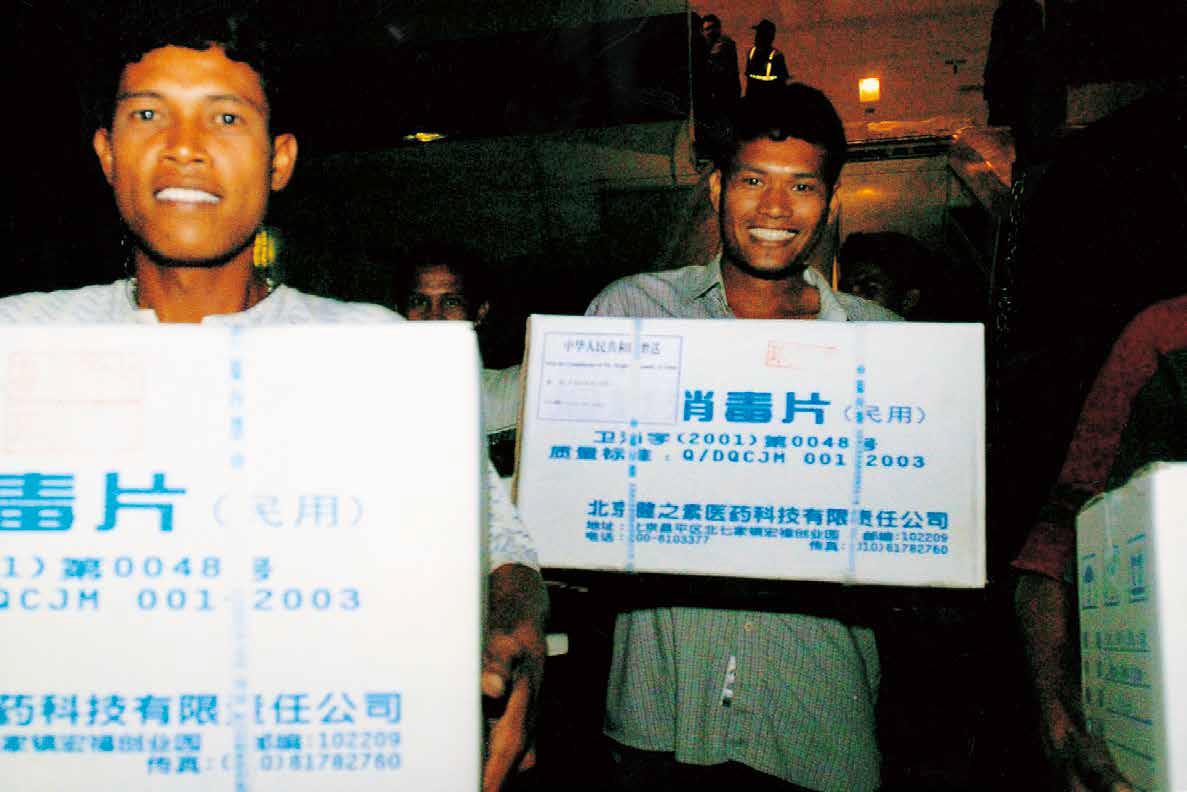
In December 2004, the Indian Ocean earthquake and tsunami inflicted enormous casualties and property losses on Indonesia, Sri Lanka, Thailand, India, Maldives, and other countries. China provided free aid totally valued nearly RMB700 million through multilateral and bilateral channels, and dispatched international rescue teams to the disaster-stricken areas immediately. The picture shows a batch of emergency relief supplies provided by the Chinese government arriving in North Sumatra, Indonesia.

Tonga’s High School was built with Chinese aid and officially put into operation in March 2005. With a building area of 7,300m², the middle school has improved basic local education.
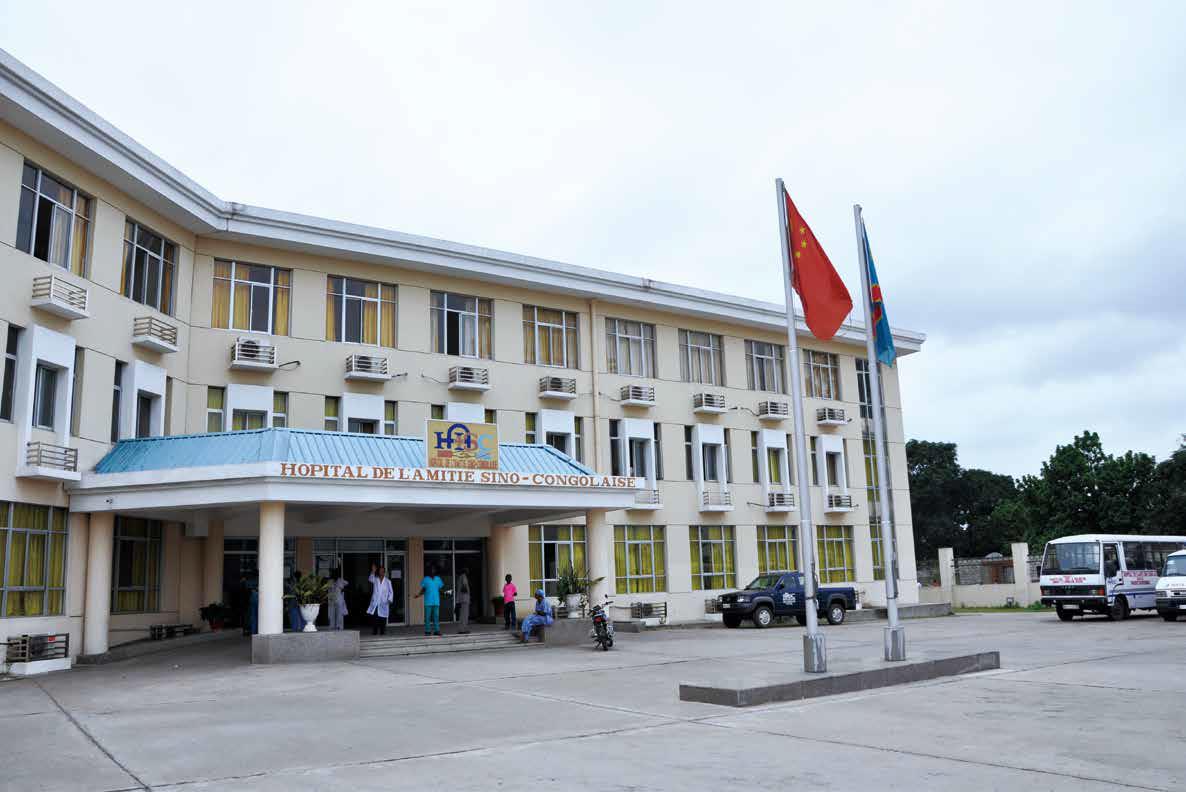
The construction of China-Congo Friendship Hospital was built with Chinese aid and completed in June 2006. Covering a total building area of 9,000m², the hospital has 150 beds and is equipped with state-of-the-art medical equipment and devices, thus becoming the first modern general hospital in Kinshasa, Congo.
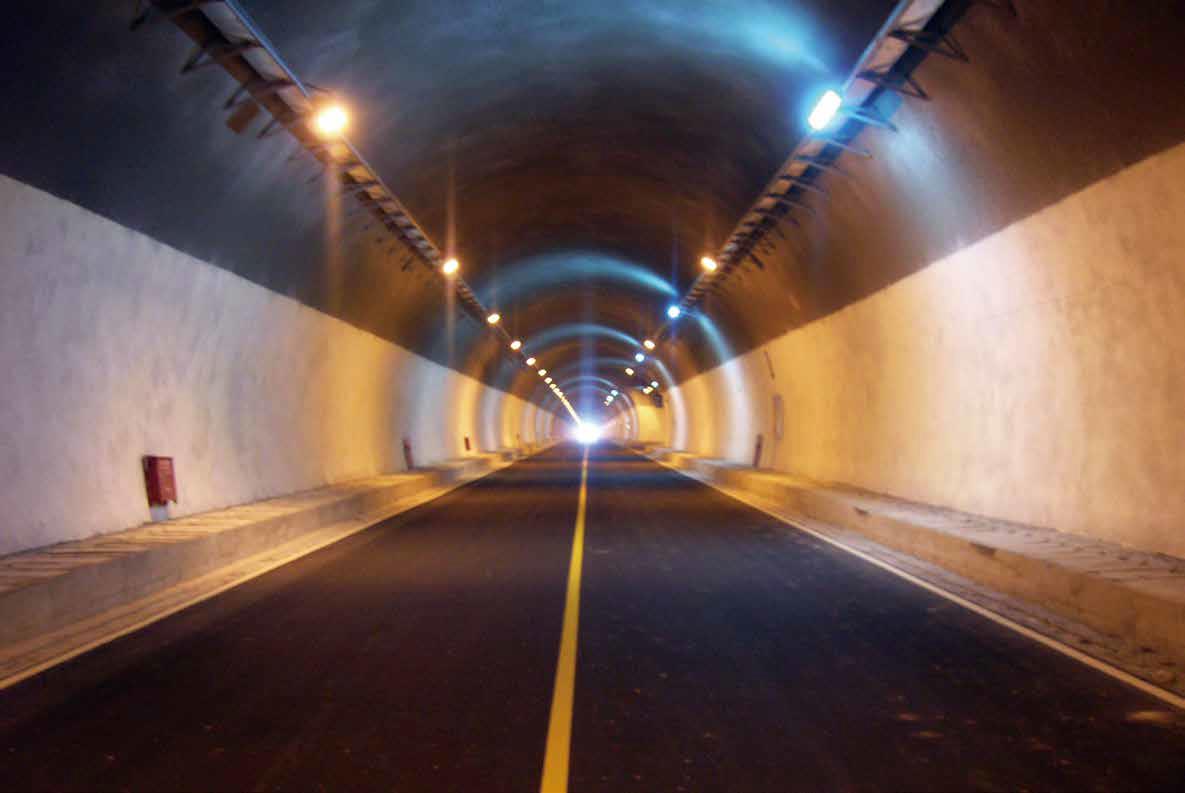
The Shar-Shar Tunnel and North-South connection project in Tajikistan were built with Chinese aid and completed in March 2008. The tunnel is 2.235 kilometers long, and the north-south connection line is 4.9 kilometers long. The project is one of the large-scale infrastructure projects built with Chinese aid in Central Asia.
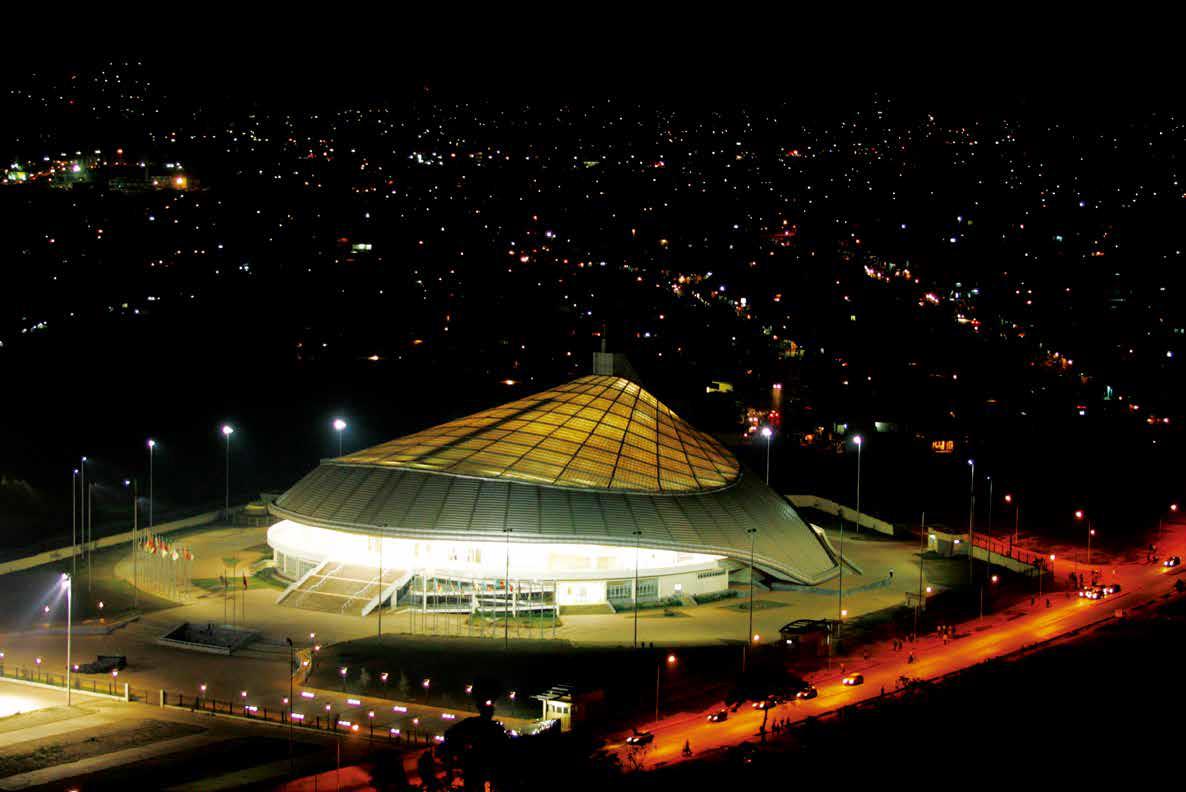
The Multifunctional stadium in Yaoundé, Cameroon was built with Chinese aid. The stadium is located in Wada District, Yaoundé, the capital of the Republic of Cameroon. The stadium covers a building area of 12,000 m². The stadium’s construction was completed in May 2008.
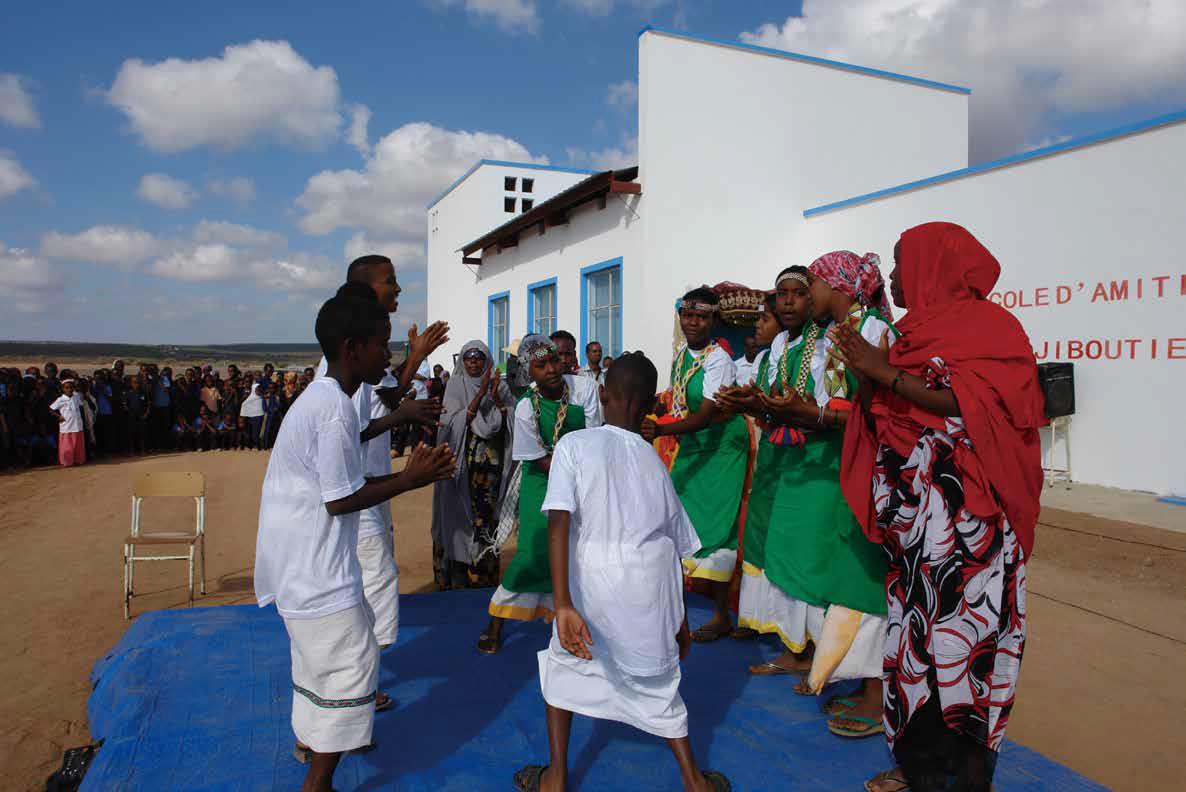
The construction of two rural schools in Djibouti was built with Chinese aid and completed in October 2008. Each of the two schools has a building area of 1,030m². The picture shows the villagers and children singing and dancing at the handover ceremony.
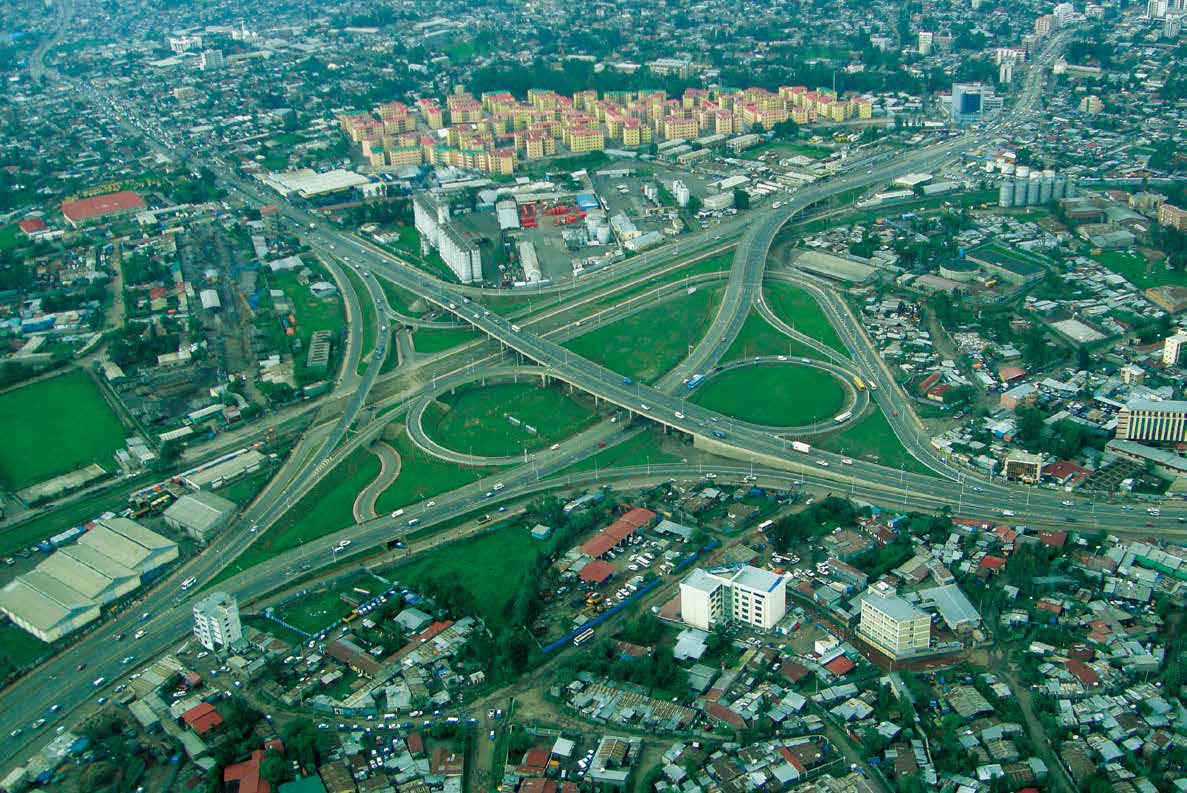
The Ethiopian Getla Flyover was built with Chinese aid and completed in May 2009. With a total length of 8,280 meters (including the approaching bridge), the four-lane interchange flyover greatly facilitates traffic in the capital of Ethiopia, Addis Ababa.
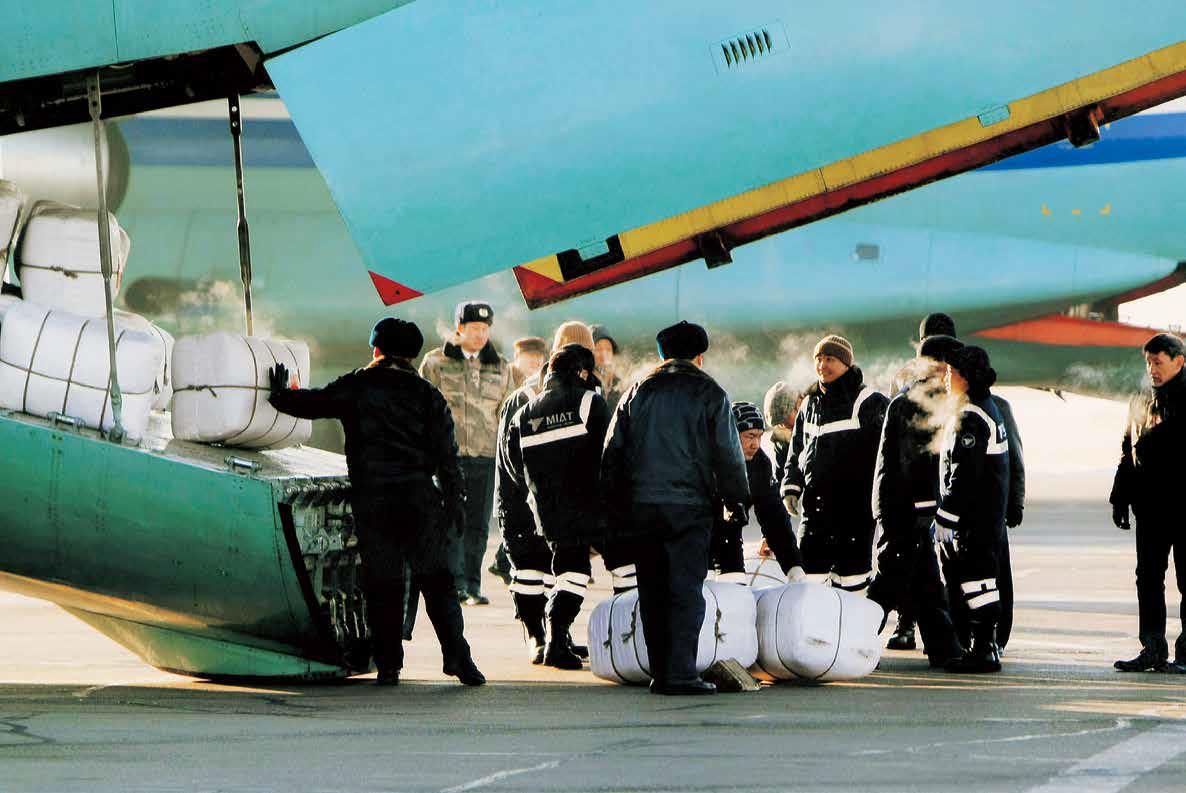
In the winter of 2009, a rare extraordinary snow disaster struck Mongolia. China provided relief supplies valued RMB 10 million to Mongolia. The picture shows China’s humanitarian relief supplies arriving in Ulaanbaatar.
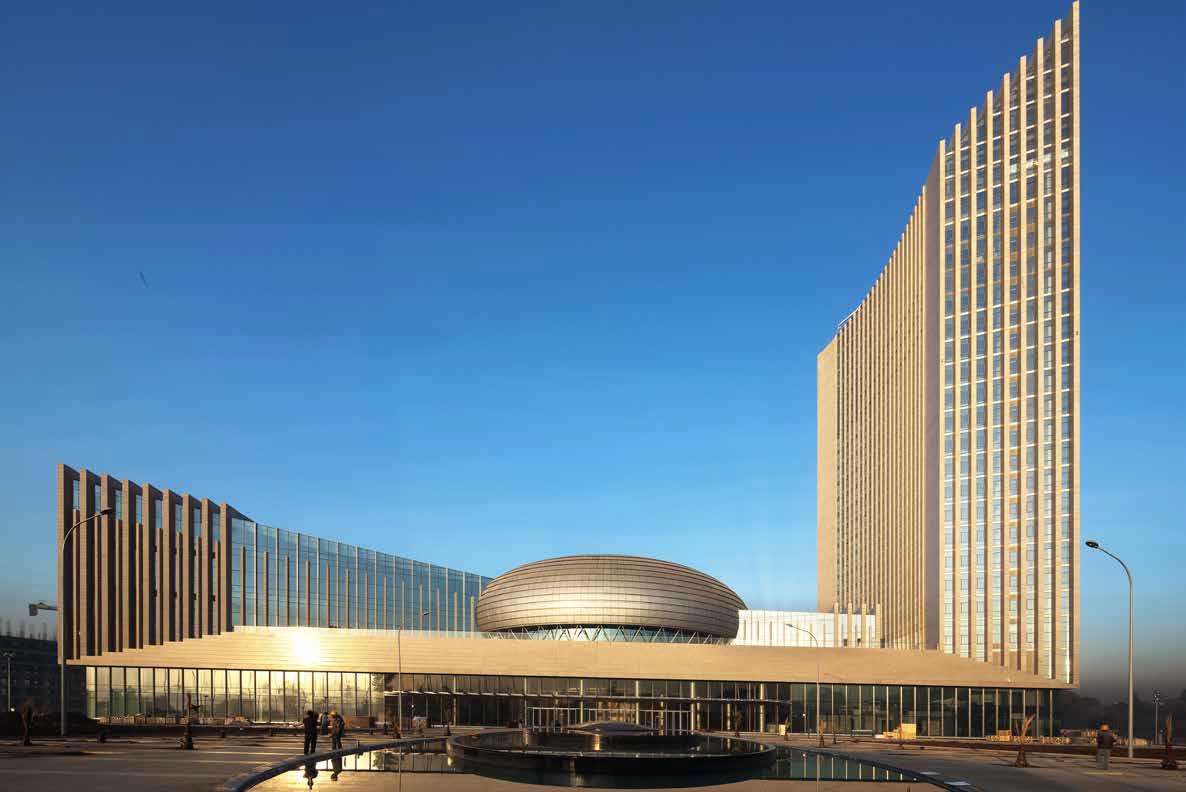
The African Union Conference Centre is located in Addis Ababa, the capital of Ethiopia, and was built with Chinese aid. The total building area is 51,000 m², and its construction was initiated on June 11, 2009 and completed on January 14, 2012.
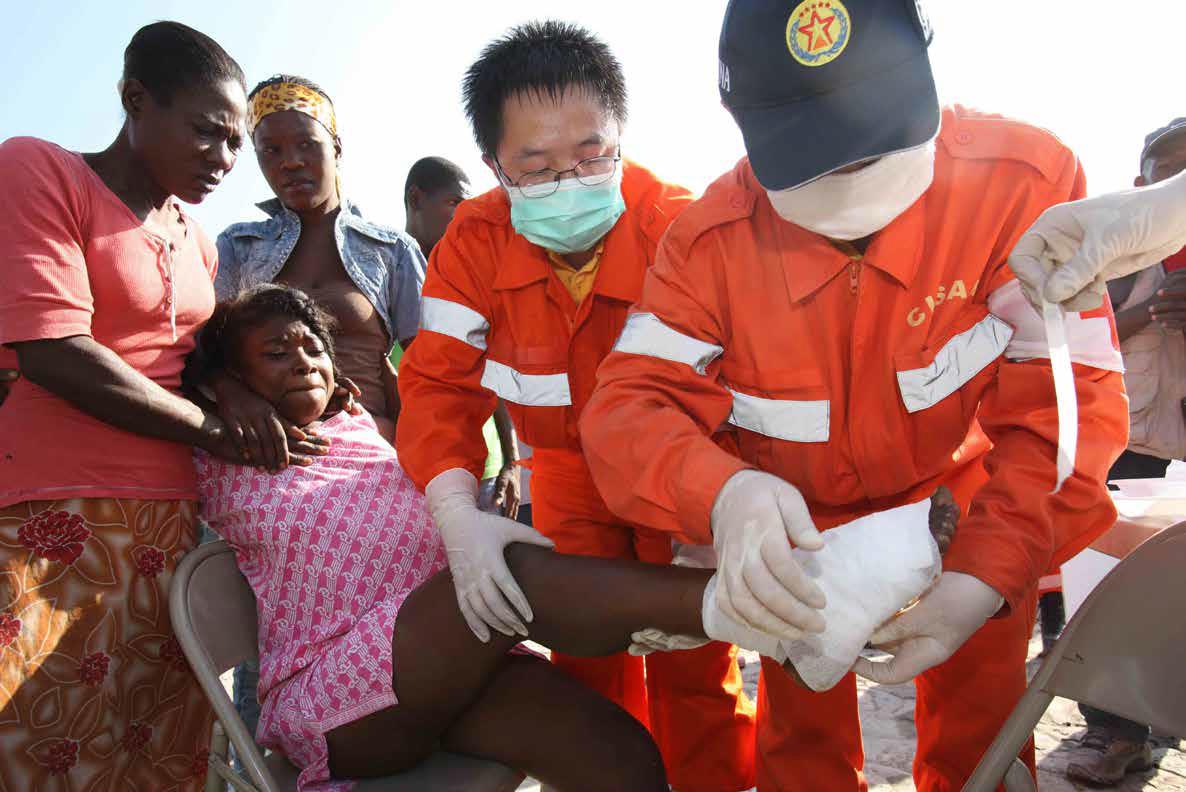
A severe earthquake struck Haiti in January 2010, resulting in heavy casualties and enormous property losses. China sent a 50-member Chinese international rescue team, including 25 search and rescue team members, 15 medical team members,and earthquake structure experts, to participate in the rescue services at the disaster-stricken areas. The picture shows a doctor of the Chinese international rescue team bandaging a wounded girl in front of the Presidential Palace in Port-au- Prince, the capital of Haiti.
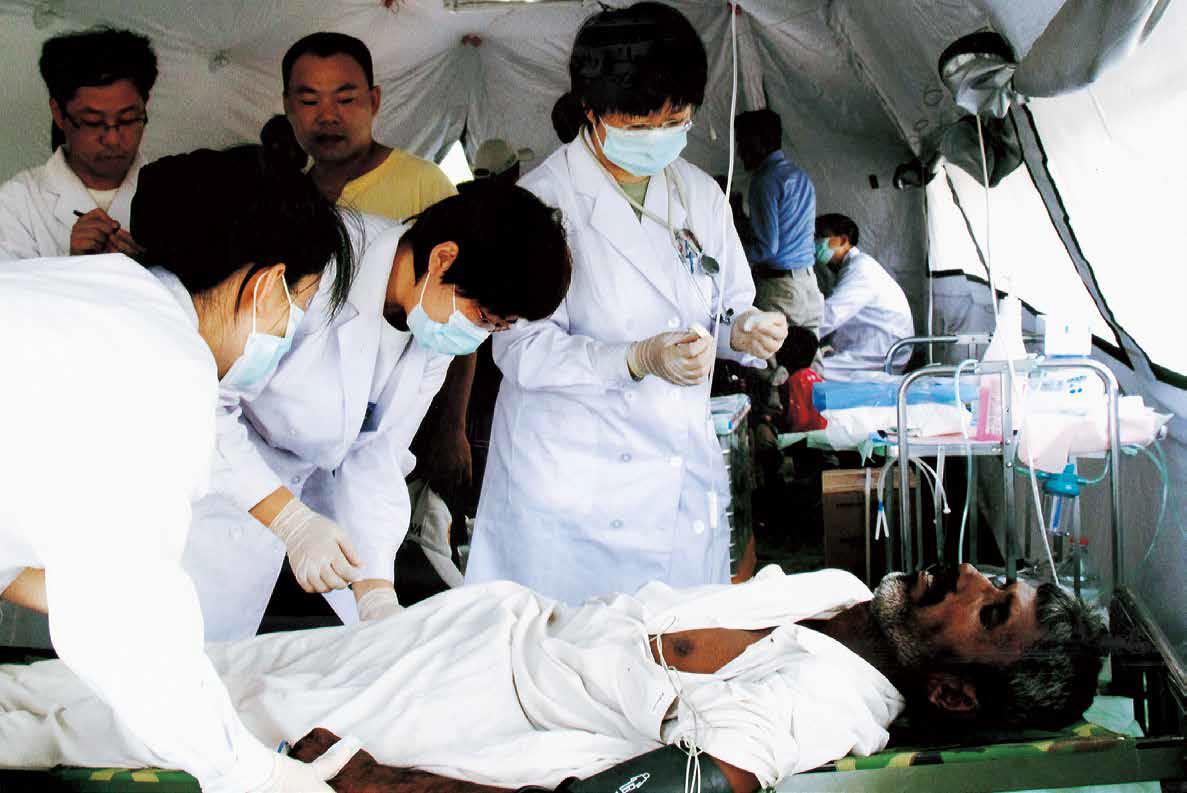
In July 2010, Pakistan was hit by an extraordinary flood rarely seen in history. The Chinese government provided emergency relief supplies to disaster-stricken areas in Pakistan and sent an international rescue team at the first time. The total assistance
was valued US$250 million. The picture shows the doctors examining the body of a victim at the mobile hospital set up by the Chinese international rescue team on the outskirts of Thatta, Pakistan.
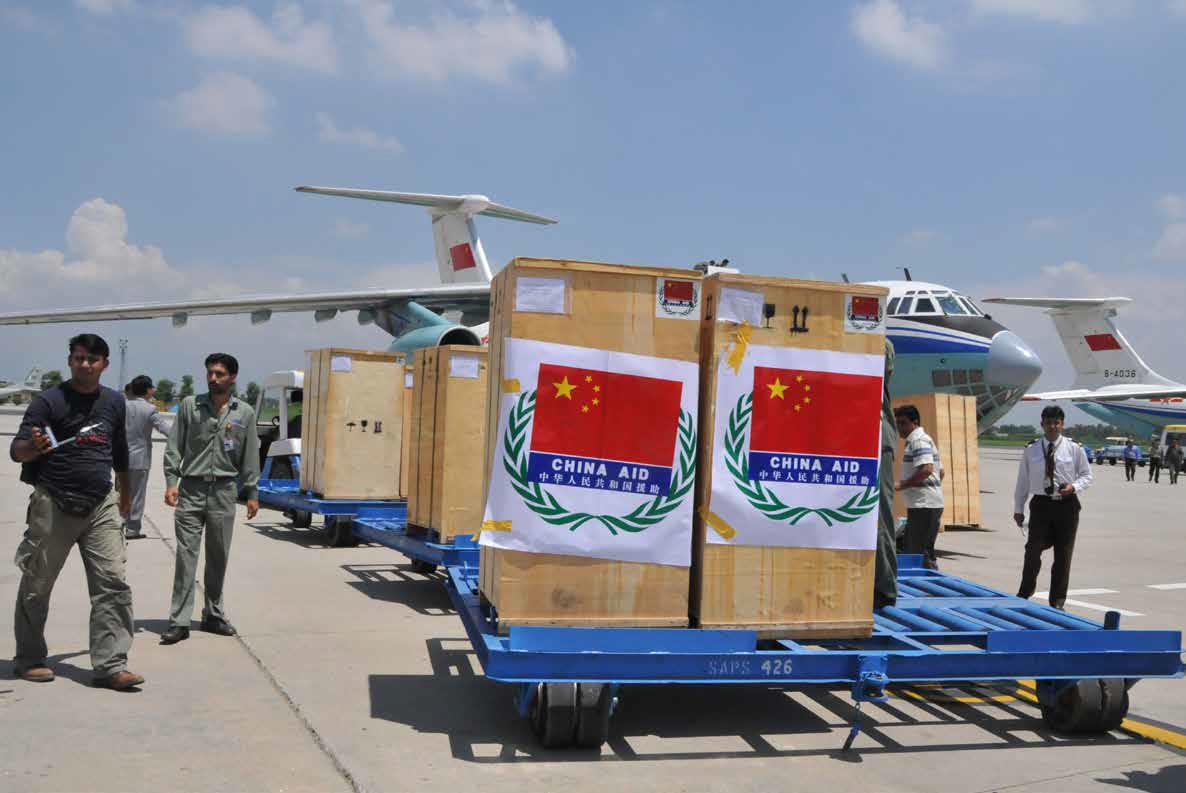
The picture shows local workers handling generators provided by China at Airport Chaklala in Rawalpindi, Pakistan on August 4, 2010.

Since 2012, China aid has helped build a 1,000-well project in Zimbabwe that has greatly eased the drought and water shortage for local people in the rural areas in Zimbabwe. The picture shows people coming to fetch water by a well in Nyamasota Village in Rusinga Region, Zimbabwe in November 2016.

China has been sending medical teams to Congo (Brazzaville) for more than 50 years. Chinese doctors have overcome the language barrier to perform many difficult operations, held lectures, and trained many Congolese doctors. They have been widely praised by the Congolese people. The picture shows members of the Chinese foreign aid medical team performing eye surgery on a patient at a hospital in Brazzaville, the capital of Congo-Brazzaville, on March 2013.
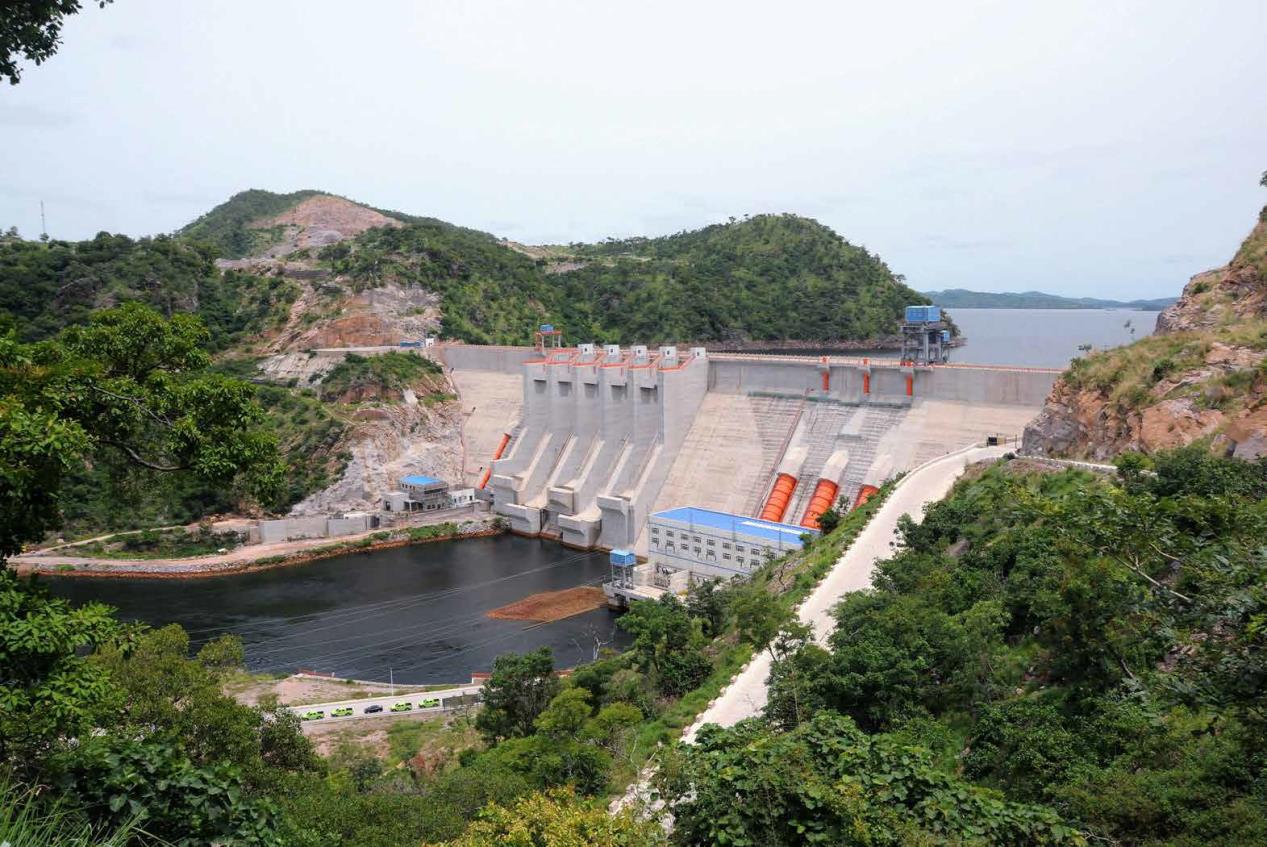
Ghana’s Bui Hydropower Station was built with Chinese aid and completed in December 2013. All three power-generating units with a total installed capacity of 400,000 kilowatts were put into operation. The hydropower station, which generates
1 billion kWh of electricity annually, helps ease energy shortages in the country. The picture shows the No. 1 main dam of the Bui Hydropower Station in Ghana.
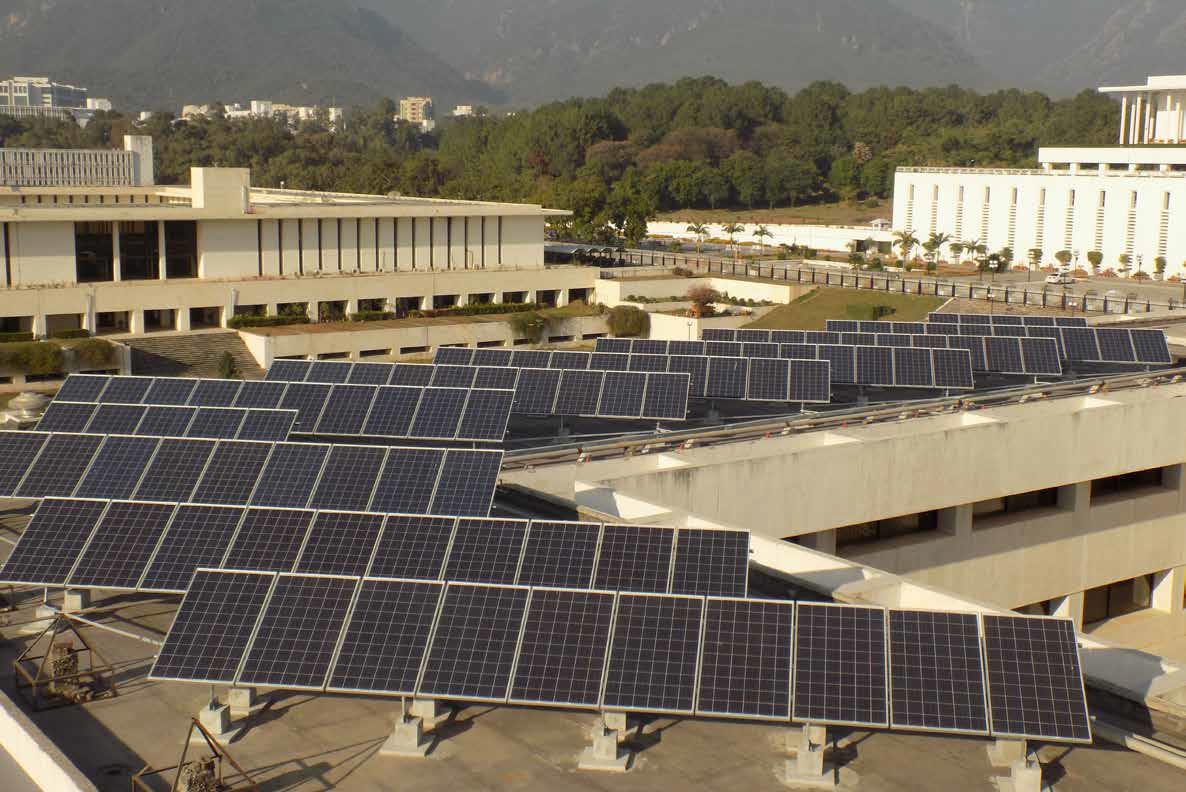
The construction of the Chinese-funded solar photovoltaic power generation project for Pakistan’s Parliament House was completed in November 2015. The project has a total installed capacity of about 1 MW. The Parliament House has a self-sufficient power supply through solar energy power generation.
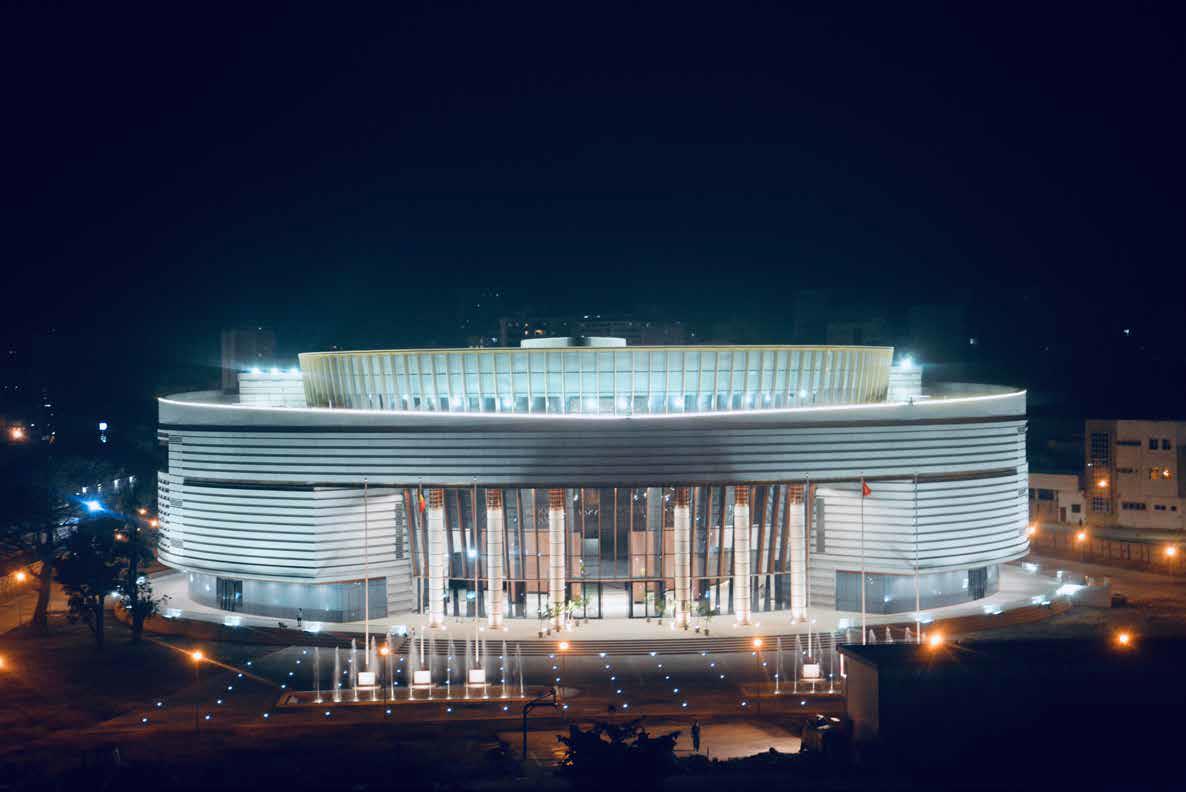
The construction of the Museum of Black Civilizations in Senegal was built with Chinese aid completed in December 2015. With a total building area of 14,000 m², the project is composed of a ceremony hall, exhibition halls, lecture halls, and collection warehouses. It is the largest museum in West Africa.

The master control broadcast system of the Armenian Public Television Station’s technological transformation project successfully passed the examination and acceptance in March 2016. The project chiefly involves the production, transportation, installation, debugging, training, and acceptance of an outdoors TV-broadcast van system and the master control broadcast system. It is of great significance for improving the level of Armenian television technology, equipment, and the quality of program production and broadcasting.
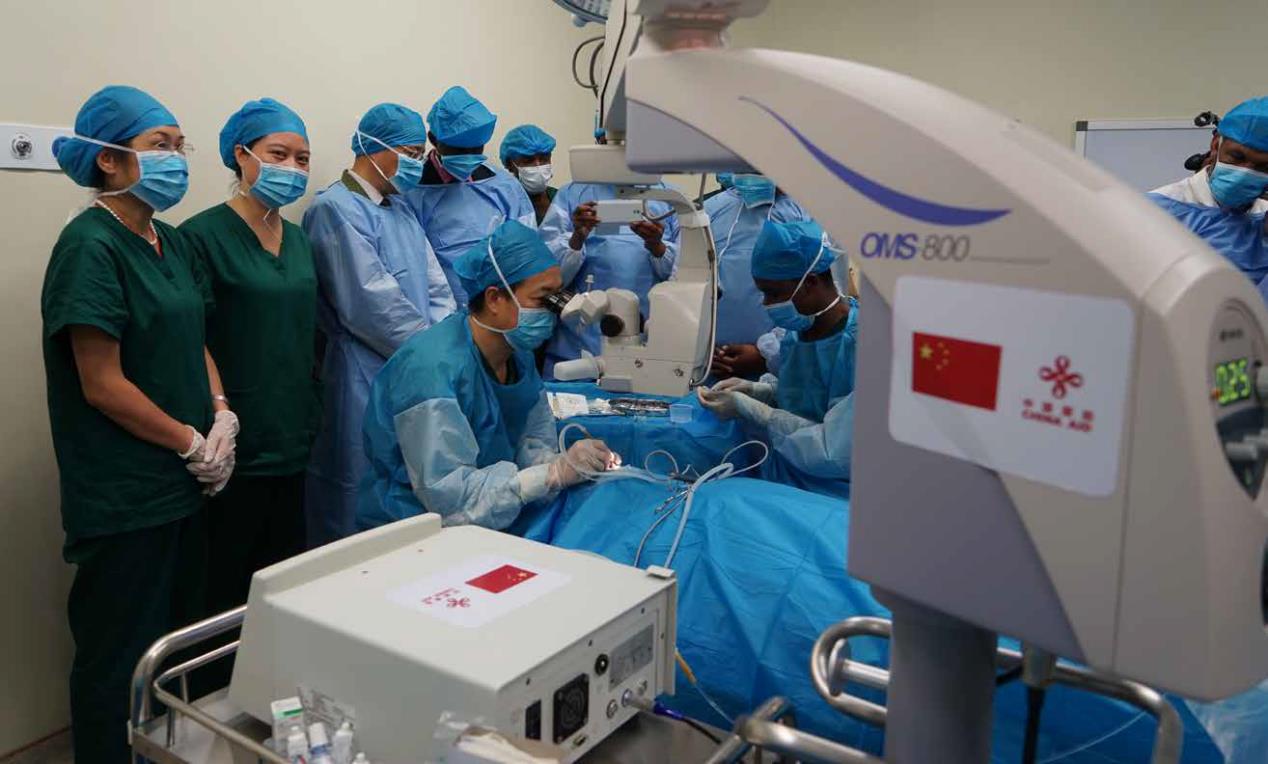
A Chinese medical team visited Comoros on the “Brightness Tour” event from May 25 to June 20, 2016 to perform surgeries on cataract patients. A total of 1,250 patients suffering eye diseases were screened, and 537 operations were performed.

The Chinese-funded upgrade project of the Tunisian Youth Cultural and Sports Center is located in Tunis, the capital of Tunisia. With a building area of 5,230 m², it is composed of a 500-seat theater, an indoor swimming pool, gymnastics rooms, judo halls, and other facilities. Its construction was completed on September 22, 2017.
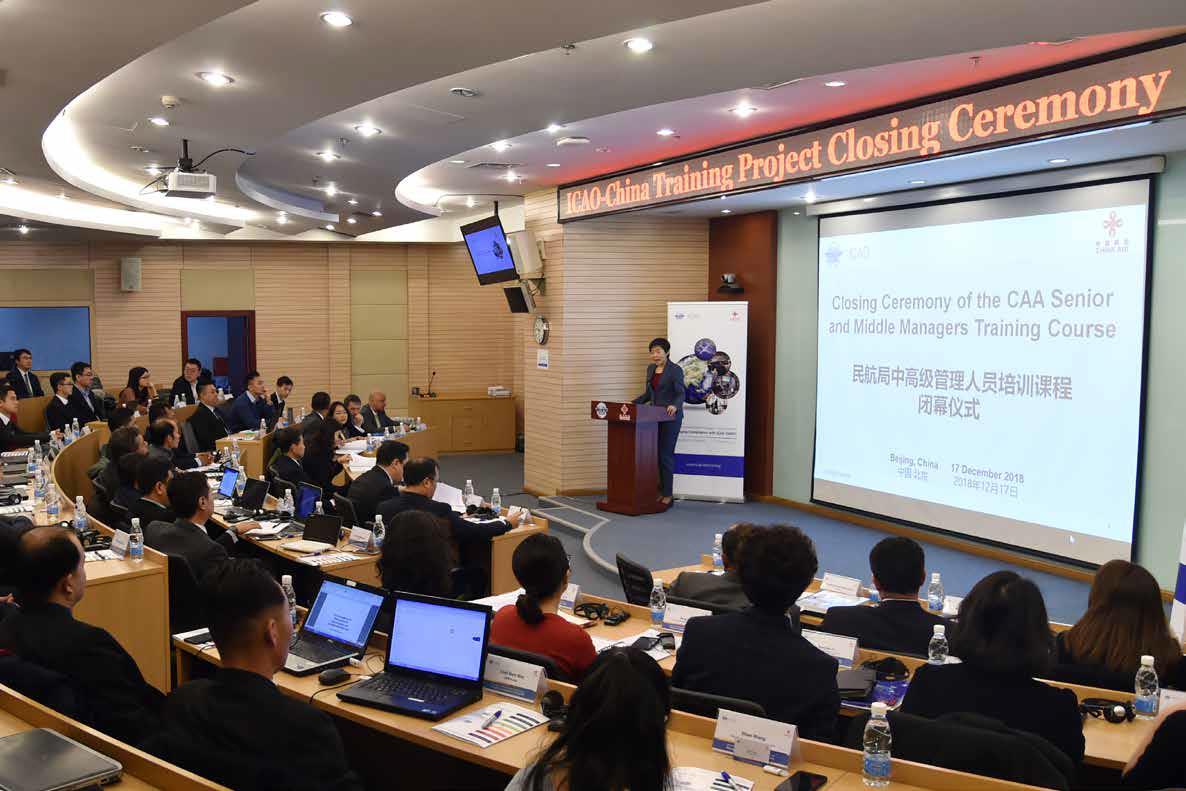
In 2018, the “South-South Cooperation Assistance Fund - International Civil Aviation Organization (ICAO)” jointly implemented the training course project for middle and senior managers. This project held 21 training programs on five continents, and 540 trainees from over 100 countries benefited from the course.

In May 2018, China held the Jamaican women’s capacitybuilding training program in Beijing, in which a total of 14 officials participated. The picture shows the trainees paying a visit to the enterprise of female entrepreneurs - Game Attire Culture Entrepreneurship Park.
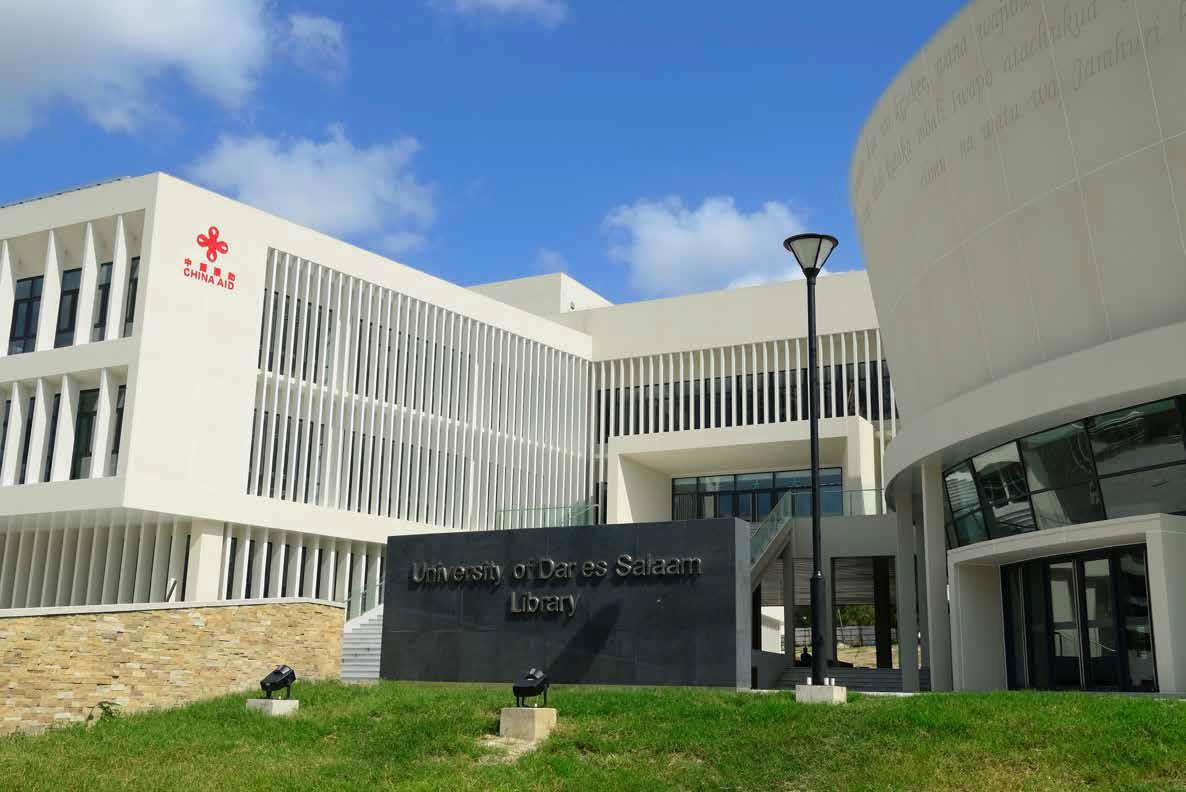
The Library of University of Dar es Salaam was built with Chinese aid. The library is located on the campus of the University of Dar es Salaam in Tanzania. It is composed of a 600-person lecture hall, reading rooms, classrooms, administrative offices, and ancillary rooms. With a total building area of about 20,000 m², its construction was completed on July 18, 2018.
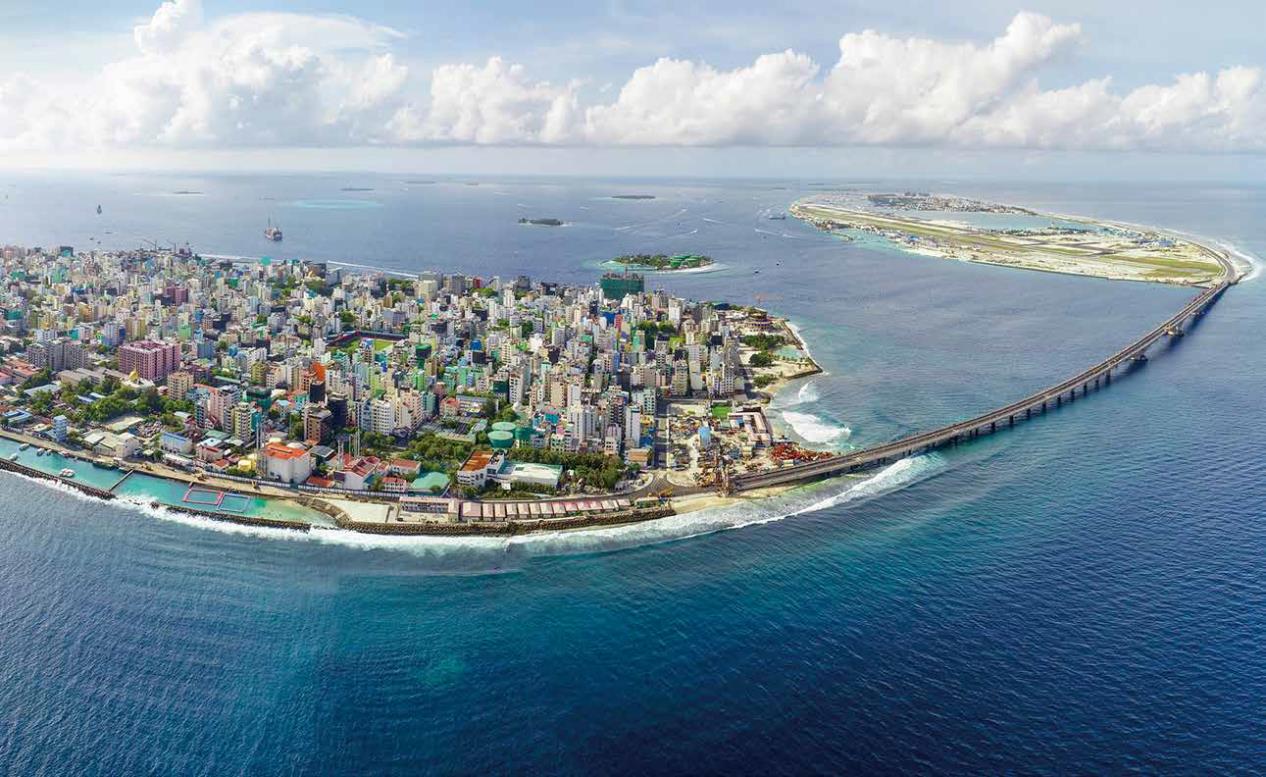
President Xi Jinping paid his first state visit to the Maldives in September 2014. The leaders of the two countries reached consensus on building the China-Maldives Friendship Bridge, which is a landmark project built by the two countries under the Belt and Road Initiative. The project connects the capital Malé to Airport Island. The main bridge is 760 meters long, and its completion acceptance was fulfilled in August, 2018.
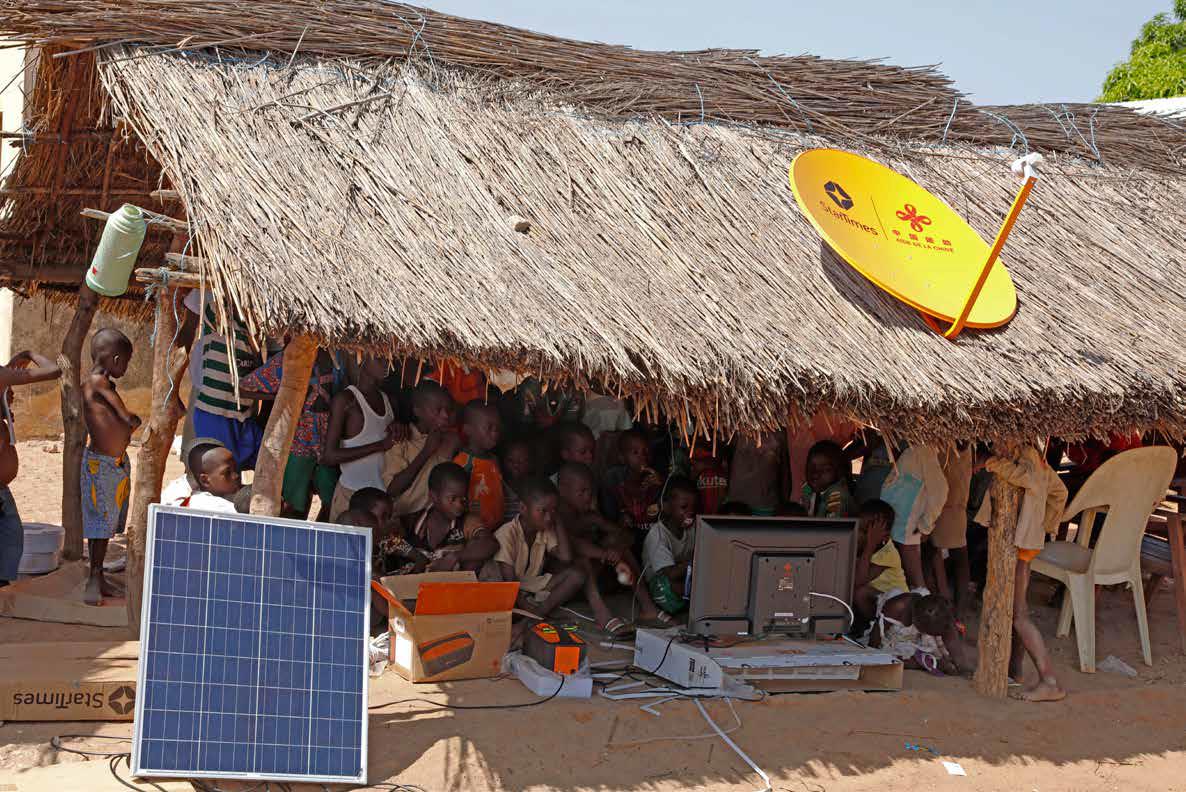
Chinese President Xi Jinping announced that the Chinese government would implement the satellite TV project for 10,000 villages in Africa at the Johannesburg Summit of the Forum on China-Africa Cooperation in December 2015. The project was carried out in 10,000 villages in 23 African countries, covering Eastern South Africa, Central Africa, West Africa, and other areas. The picture shows teaching video resources under the project delivered to a village Primary School in Uganda in August 2018.
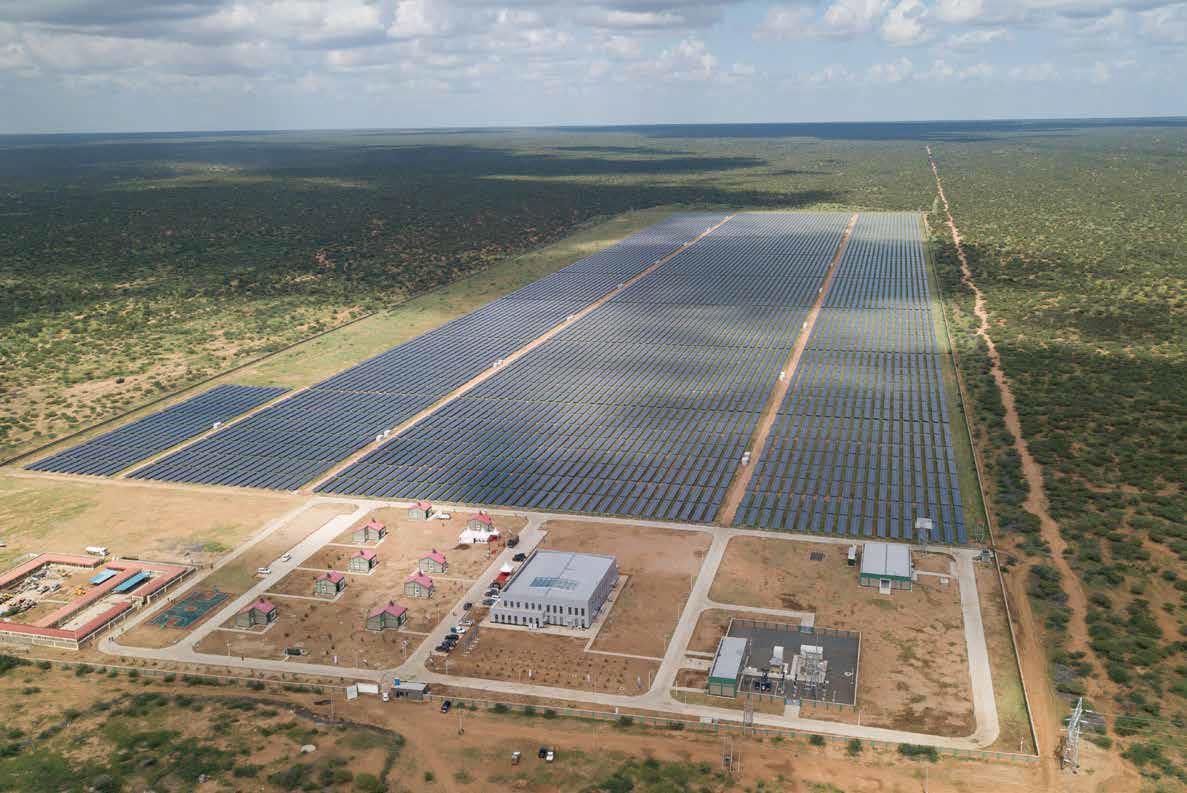
The 50 MW PV power station in Garissa, Kenya, was built with concessional loans from China and was officially put into operation in December 2019. As the largest PV power generation project in East Africa, the project can meet the demands of 70,000 households in Kenya with a total population of over 380,000 for electricity supply, benefiting over 50% of the population in Garissa, Northeast Kenya, where the project’s site is located.
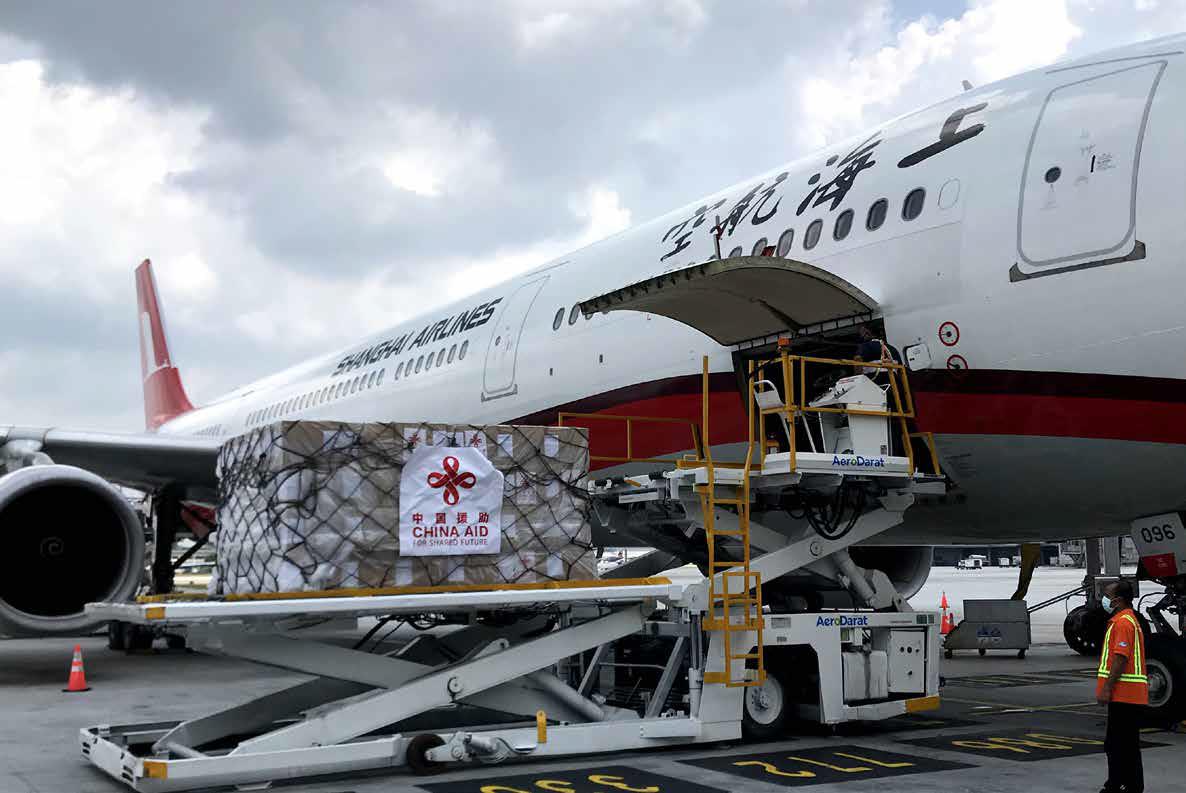
The anti-COVID-19 supplies provided by the Chinese government to Malaysia arrived at Kuala Lumpur Airport by chartered plane in March 2020.
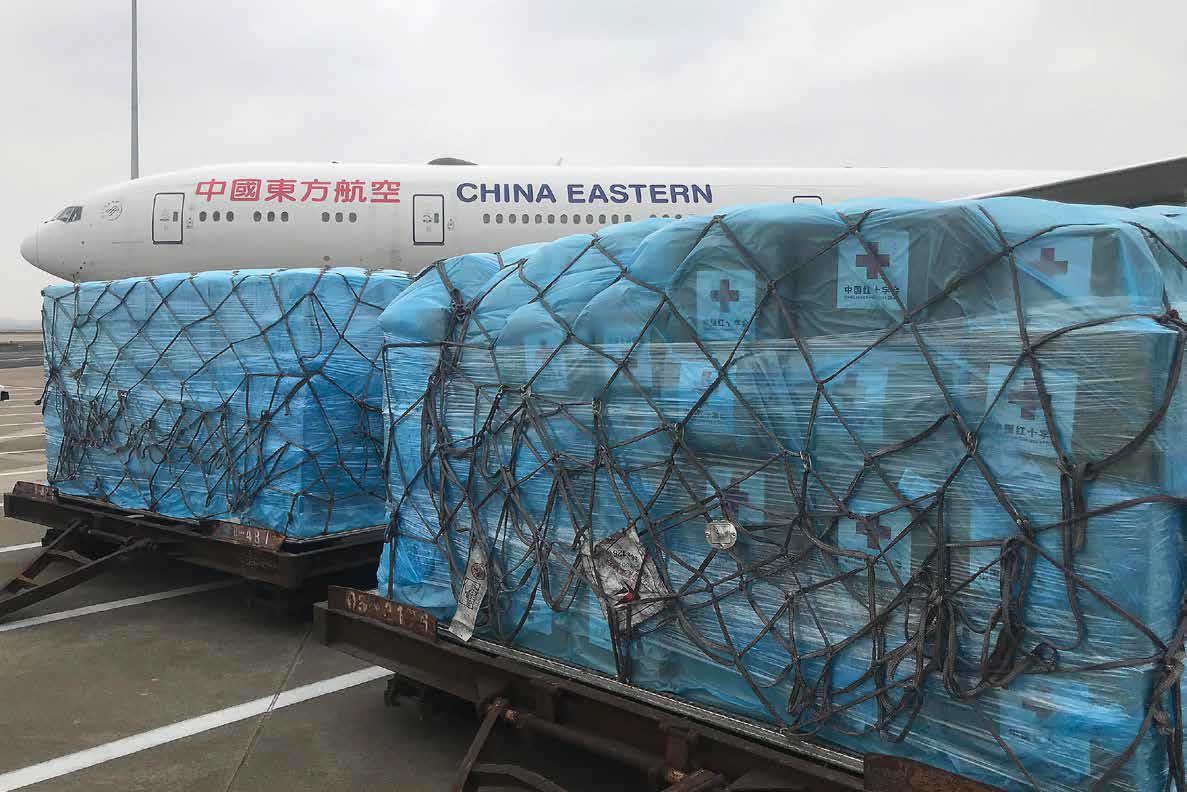
In March 2020, the Chinese government and the Red Cross Society of China sent about 9 tons of medical materials to Rome, Italy from Shanghai.
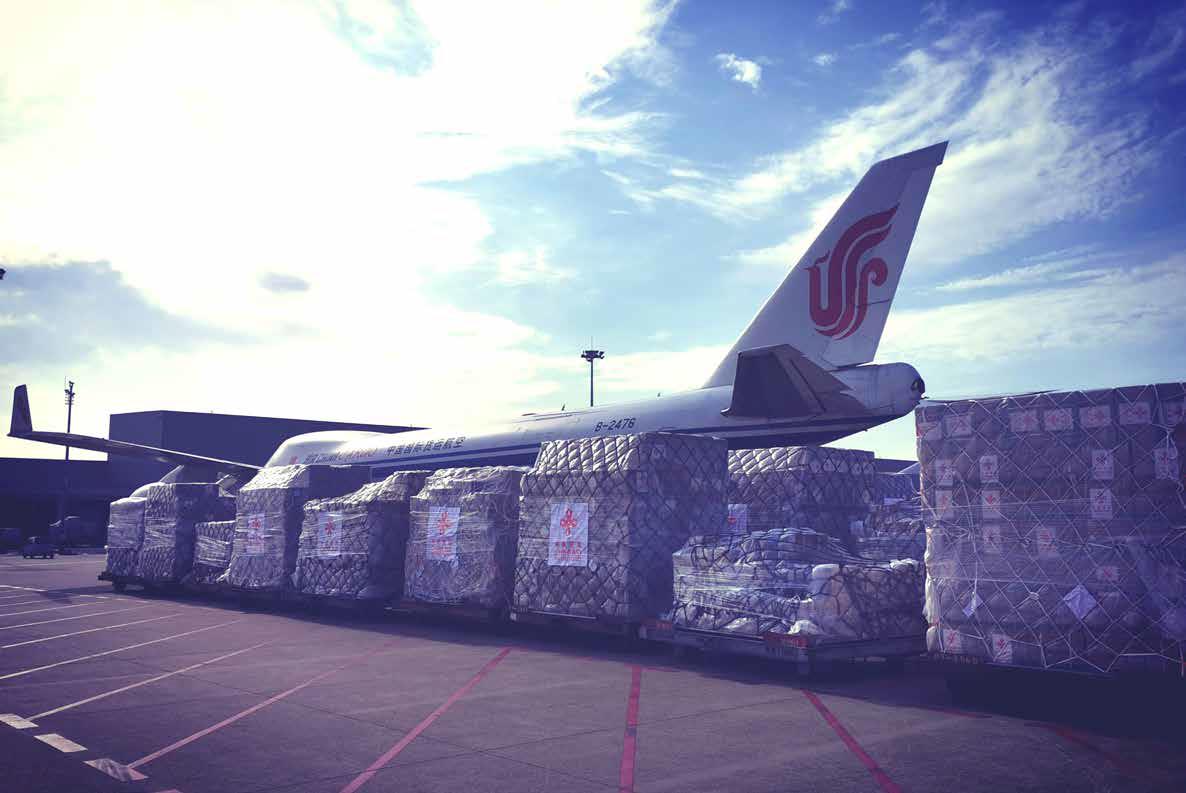
Anti-COVID-19 supplies provided by China to 18 African countries arrived in Ghana in April 2020. In addition to Ghana, the supplies were also given to 17 other countries to fight COVID-19.
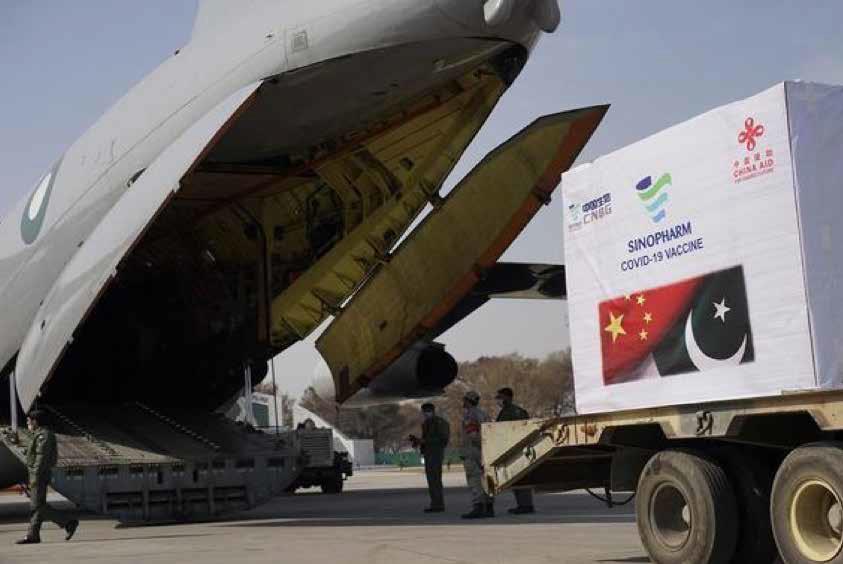
The first batch of COVID-19 vaccines from China was officially given to Pakistan on February 1, 2021.
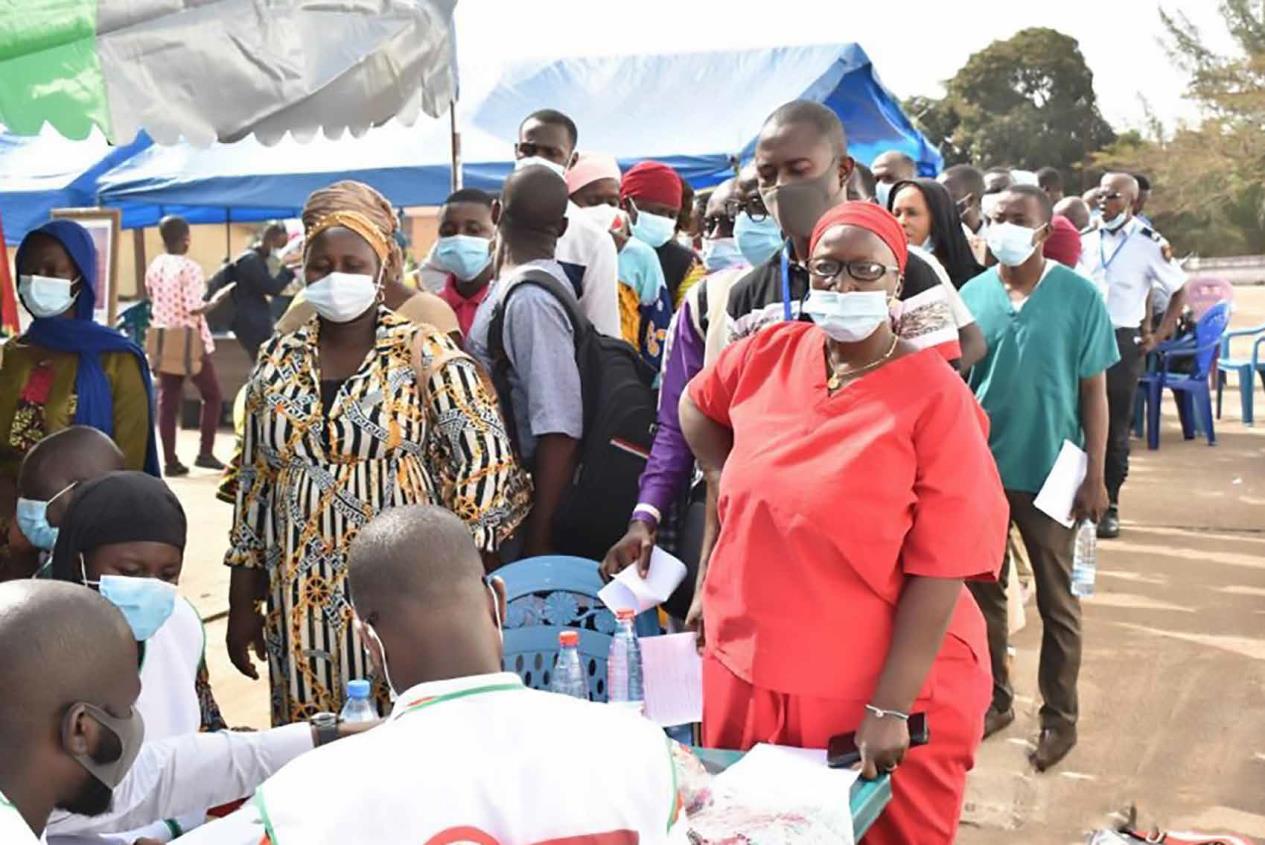
Locals lined up to receive their Chinese-made COVID-19 vaccines in the Guinean capital, Conakry, on March 5, 2021. (Xinhua News Agency)
China has explored foreign assistance with Chinese characteristics over the extraordinary past 70 years. It is a path of friendship and mutual cooperation, setting a good example for South-South cooperation. Looking back, we feel deeply proud of our achievements. Looking ahead, we stick to the original aspirations for providing foreign assistance.
China will put into implementation the foreign assistance measures announced by President Xi Jinping in major international occasions such as the summits for the 70th anniversary of the founding of the United Nations, the Belt and Road Forum for International Cooperation, and the Beijing Summit of the Forum on China-Africa Cooperation. China will work with other countries to promote international development cooperation, facilitate the implementation of the United Nations 2030 Agenda for Sustainable Development, and make greater contributions to building a community with a shared future for humankind.
=FRESH NEWS




